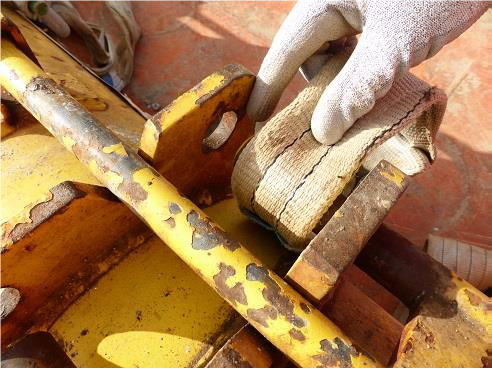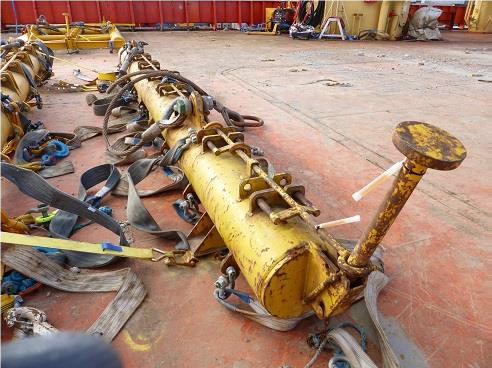LTI: finger injury during lifting operations
What happened?
A crewman suffered a serious hand injury whilst working on subsea mattress recovery using a quick release mattress handling beam. The lifting webbing slings and ROV hooks were disconnected from the mattress and then, whilst reconnecting the beam, two of the pins failed to fully engage due to the slings being caught by the pins. The crewman was in the process of freeing the sling, when another deck crew member operated the quick release bar, which re-engaged the pin, resulting in trapping the injured person’s finger.

What went wrong? What were the causes?
Our member notes that this incident took place during the hours of darkness, and records the following reasons for occurrence:
- The design of the pin engagement mechanism and the width of the slings;
- On this occasion there was a breakdown in communication between the deck crew members; the injured person was not clear of the pins when the mechanism was re-engaged.

What actions were taken? What lessons were learned?
Our member suggested that when involved in mattress deployment and recovery using a quick release mattress handling beam, confirm and verify that:
- The task plans and task risk assessments clearly define the roles and responsibilities of the deck team involved in the operation, and that mitigation for entrapment hazards is fully understood, including nominating a person to control and operate the handling beam quick release bar;
- Consideration is given to attaching rope grommets or tie wraps to the end of the slings to help keep the sling in place when engaging the pins and to keep fingers out of line of fire;
- There is a clear and defined sequence of operation and communications protocol addressing what commands are to be called, when and by whom. Communication and commands to include:
- the use of an ‘all clear’ command and a confirmation that all personnel are clear, prior to activation and operation of the quick release bar
- the use of a ‘worksite is safe’ command when it is safe to connect/re-connect slings to the beam;
- There is a ‘run through’ and a test of the communications protocol takes place with all personnel involved in the task during pre-job TBTs, shift handovers and when there is a change of crew.
Members may wish to refer to:
Safety Event
Published: 9 November 2018
Download: IMCA SF 25/18
IMCA Safety Flashes
Submit a Report
IMCA Safety Flashes summarise key safety matters and incidents, allowing lessons to be more easily learnt for the benefit of all. The effectiveness of the IMCA Safety Flash system depends on Members sharing information and so avoiding repeat incidents. Please consider adding [email protected] to your internal distribution list for safety alerts or manually submitting information on incidents you consider may be relevant. All information is anonymised or sanitised, as appropriate.
IMCA’s store terms and conditions (https://www.imca-int.com/legal-notices/terms/) apply to all downloads from IMCA’s website, including this document.
IMCA makes every effort to ensure the accuracy and reliability of the data contained in the documents it publishes, but IMCA shall not be liable for any guidance and/or recommendation and/or statement herein contained. The information contained in this document does not fulfil or replace any individual’s or Member's legal, regulatory or other duties or obligations in respect of their operations. Individuals and Members remain solely responsible for the safe, lawful and proper conduct of their operations.
